Hinkie, Colangelo both deserve credit for Markelle Fultz trade
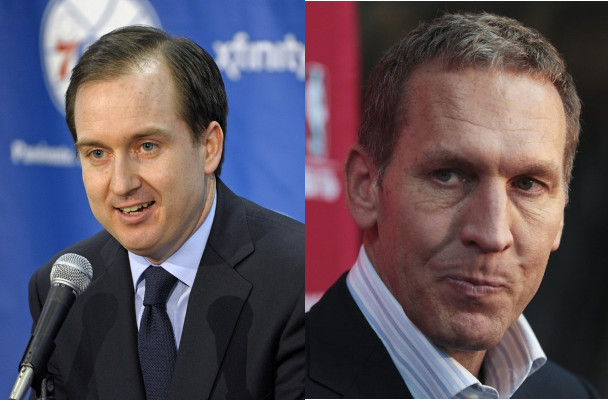
Thursday night was a relatively anti-climatic night for the Philadelphia 76ers, as if often the case for the team holding the #1 overall pick.
Sure, the team made move to acquire another first round pick later on in the draft, using it on likely draft-and-stash candidate Anzejs Pasecniks, one of just a few international prospects the team added on the day.
But most of the drama and excitement over the Sixers’ draft happened days earlier, with the trade to move up to #1 finalized on Monday. The Sixers’ draft was already graded and analyzed far in advance on Thursday night’s formality.
Yet while the trade being done days in advance might have dulled Thursday night’s excitement a little bit, it set the city up for a decade of hope. The core of Joel Embiid, Ben Simmons, Markelle Fultz, and Dario Saric has the talent to be one of the best in the league. The Sixers are still flush with cap space, have all of their own future first round draft picks, and still maintain a future draft pick from one of the Lakers (2018) or Kings (2019), both teams with long-running, high-lottery track records.
The position is an enviable one to be in.
Sure, the team has proven precious little on the basketball court. We have a pretty good idea that Embiid, who averaged 20.2 points, 7.8 rebounds, 2.5 assists, and 2.1 blocks per game as a rookie, can be a star. What we don’t know is whether his lower body can withstand the rigors of an NBA season. Fultz and Simmons have yet to compete on an NBA court.
The media, as a collective, is fixed on what is “known”. It’s how we rate things, handing out Executive of the Year awards for decisions made three years in the past. NBA front offices, on the other hand, are forced to make their peace with uncertainty and project what will be, whether that’s how draft prospects will develop or how free agents will age and adapt. It might seem like certainty is possible in free agency, until you realize how drastically aging and the changing of coaches/teams/systems/opportunity can impact a player’s performance. At best you’re dealing with varying degrees of uncertainty.
Certainty is an illusion, and fearing uncertainty a trap we fall victim to far too often. Imagine turning down Gerald Wallace for Damian Lillard because Dame “hadn’t proven anything” in the NBA. The fog of uncertainty causes paralysis in some, and that reluctance to embrace an unknown can change the course of a franchise as well, and frequently not in ways fans will enjoy when the details are filled in over time.
So while the fact that the Sixers haven’t proven much at the NBA level is true and valid, that should do little to slow down the deserved excitement of watching all of this talent grow together into what could become a dominant force in the NBA.
* * * *
The Philadelphia area has been caught up in a near-constant debate over the merits of The Process, the Sixers’ controversial method of rebuilding under former general manager Sam Hinkie.
Everything that has happened since the change in management at the top has been framed by this divide. Who deserves credit? What would Hinkie have done? Is this a deviation from The Process?
The great thing about this latest potential franchise-altering trade is that both regimes deserve an immense amount of credit for it, and both sides of the seemingly never-ending argument should be willing to, even if begrudgingly, admit so.
Even though it’s been a full year since Hinkie stood at the top of the 76ers organization, the case that they deserve a ton of credit for the move is an easy one to make, which speaks to the sheer amount of future assets Hinkie and his team left Colangelo with.
The Philadelphia 76ers would have been left with the 5th overall pick after May 16th’s lottery if it weren’t for Hinkie. With that as a starting point, and without future high value draft picks like those from the Lakers (unprotected in 2018) and Kings (unprotected in 2019), the Sixers would have had zero chance to make that jump up to #1 without including Ben Simmons or Joel Embiid.
If you weren’t following the Sixers closely over the last few years, you’d expect that they had to give up core pieces of their team, young quasi-stars, in order to get such highly valued assets. Teams just don’t go trading away unprotected future picks, especially not when those picks were from teams as perpetually bad as the Kings (11 straight seasons below .500, 309–577 record over that time) and the Lakers (91–237 record over the last four years, 2nd pick in the draft three years running).
What were these sought-after talents the Sixers gave up to get these pesky future draft picks? Michael Carter-Williams, who was recently traded for Tony Snell and who averaged just 14 minutes per game after March 1st for the Bulls, got the Sixers the Lakers pick. Arturas Gudaitis, Luka Mitrovic, and a tiny bit of short-term cap space (which the Kings used to sign Kosta Koufos and Marco Belinelli in the summer of 2015) got the Sixers an unprotected pick from Sacramento in 2019, and allowed the Sixers to swap the 5th pick for the 3rd pick this year. Franchise altering indeed.
It’s easy to look at that list of what the Sixers gave up and wonder how that was even possible, how unprotected draft picks exchanged hands for such tiny potential reward. With the benefit of hindsight, that is absolutely a fair question. Yet hindsight obscures just how hotly debated the Michael Carter-Williams trade was, both internally and externally. It obscures how well-regarded he still was around the league following his Rookie of the Year campaign, and how damning the narrative became that Hinkie didn’t care about winning, didn’t care about building a team, and that trading his point guard of the future just proved that point.
It all sounds silly now, of course, with Carter-Williams shooting 42.2% from the field and 25.2% from three-point range over the last two years, falling out of favor with both the Milwaukee Bucks and the Chicago Bulls. The difference is, the Bucks got Tony Snell in return and the Bulls will quite possibly let him walk for nothing.
If the Sixers traded Carter-Williams in February 2017 rather than February 2015, the narrative would have been much different. The outcry over not building a team wouldn’t be there, as the Sixers would just be moving on from another late lottery pick that didn’t work yet. Yet the return wouldn’t be there, either. The ability to turn Carter-Williams into a real, legitimate, high-value asset, and the ability to control the narrative, were at odds with each other. Such is life when beating the market to consensus, I suppose.
It’s the part of Hinkie’s plan that always gets overlooked by critics. “Anybody could lose,” they say. Perhaps, although I’d argue very few would have the conviction to do so when their job’s on the line, even if Ben Simmons and Markelle Fultz sat there as a potential reward down the line, an uncertain carrot that another GM might be lucky enough to grab. We, as humans, tend to like being employed, like being in charge, and tend to put that as a higher priority than all else.
Yet what’s easily ignored when evaluating Hinkie’s tenure, and the position the Sixers are in, are those trades that he so consistently and undeniably won. It was, perhaps, easier to ignore these trades when Hinkie left, since none of those high-value future assets had yet to materialize. The Lakers pick, top-5 protected in 2015 and top-3 protected in 2016, never had the chance to convey, something which would end up benefiting the Sixers (but not Hinkie) in the end. The #3 pick and Kris Dunn doesn’t get the Sixers Markelle Fultz. Lady Luck can be weird like that.
So there Hinkie stood in the spring of 2016, an injured Joel Embiid, an injured and troubled Jahlil Okafor, and a whole bunch of uncertainty. We don’t like uncertainty, so Hinkie had to go, even if those uncertain future draft picks still retained a lot of upside. 14 months later the Sixers (with the lottery ball combinations Hinkie obtained) won one lottery and moved up in another draft using the very assets Hinkie accumulated. Credit where credit is due.
* * * *
When Bryan Colangelo arrived in town to replace Hinkie, the basketball populace didn’t know what to make of him. The job he did in Phoenix was practically revolutionary, with shrewd moves putting the Suns on the brink of contention.
But that was overshadowed by the more recent Toronto Raptors fiasco, where Colangelo was handed a young Chris Bosh, the #1 pick in the 2006 draft, and a plethora of cap space. Ending up with a team that featured Andrea Bargnani, Marco Belinelli, Jose Calderon, and consistently one of the worst defenses in the league wasn’t exactly inspiring. Sure, his tenure in Toronto was salvaged a little bit by the Kyle Lowry trade, but getting the thought of Colangelo squandering the prime of an up-and-coming star big man was hard to wash away, especially considering the similarity to the Sixers’ current situation.
The moves last summer were a start, although it’s hard to give him too much credit for not screwing up the #1 pick in last year’s draft, the basketball equivalent of getting points for signing your name on the SAT. But his other two picks — Timothe Luwawu-Cabarrot at 24 and Furkan Korkmaz at 26 — looked promising, and the free agent deals he signed over the summer, while not exactly working out as planned to this point, were at the very least not damaging long-term.
But there were a great many different ways Colangelo and his revamped team could have gone with the assets left to him by the previous regime, from unwise free agent signings to unloading those assets in trades for veterans who may or may not have interest in sticking around through the rebuild. It would have been easy to look at how the Sixers played in January, how the Sixers’ defense played with Embiid on the court all year, and see an accelerated path to playoff contention. To think the core was ready to move forward in a meaningful way and to stop focusing on putting a foundation in place. To make moves more geared towards the win total than the future, similar to how Colangelo ran the Raptors in the summer of 2007.
Yet Colangelo avoided those traps and instead doubled down on building a young foundation, giving up a piece of his treasure trove of assets to add a 19-year-old point guard who fits seamlessly alongside Ben Simmons and Joel Embiid. Fultz was not only the best player in this draft but also the best fit to put alongside Embiid and Simmons, eliminating the dilemma presented to the Sixers if they remained at #3 in the draft.
The path Colangelo chose to spend his assets on was easily the best of all the available options.
Just as impressively, Colangelo minimized the potential long-term damage in such a deal. It’s hard to really gauge the cost in moving up to #1 in the draft since it happens so infrequently. The Kevin Love for Andrew Wiggins swap is difficult to use as a measuring stick because of the unique circumstances surrounding LeBron’s arrival, and the Chris Webber for Penny Hardaway trade far enough in the past that none of Embiid, Simmons, or Fultz were even alive at the time. Team building and trade valuation have changed quite a bit in the last 24 years.
In return for the #1 pick, the Celtics got the #3 pick in the draft from the Sixers, obviously, along with one future first round draft pick. That selection will be the Lakers’ 2018 pick, if it falls between #2 and #5 after next year’s lottery. If not, it will be the better of the Sixers’ or Kings’ 2019 selections. Unless either of those 2019 selections end up at #1, in which case the Celtics will get the lesser of two picks.
That’s a long-winded way of saying the Celtics will get one additional draft pick, but it won’t ever be the #1 pick in the draft. Even without the past transactions to form a real baseline, that seems like a job well done.
The benefit of getting Fultz is obvious, and should yield results long into the future, a future which is looking more and more exciting by the day. But the hidden benefit of this move is that both sides deserve credit: Hinkie and his team for the incredible position the team was put in, and Colangelo and his team for making the best possible use of those assets. Regardless of which side of The Great Process Debate you fall on, it should be easy to recognize, and give credit to, the contributions of all those involved.
“Of course. How can there not be?” Sixers head coach Brett Brown told members of the media on Friday after being asked whether Hinkie deserved some credit, a day after talking about how he sent a text to Hinkie thanking him. “None of us can dismiss the resources that Sam Hinkie left behind and the work that he put in to produce those resources.
“I also think [Bryan Colangelo] took the inheritance and made it better. He took what was provided and did an amazing job,” Brown continued, perfectly summarizing this 2,000 word column into one concise quote.
The two sides of The Great Process Debate can finally agree that the excitement surrounding the team is real, that the future is brighter than it’s been in quite some time. Both men deserve some level of credit for that.


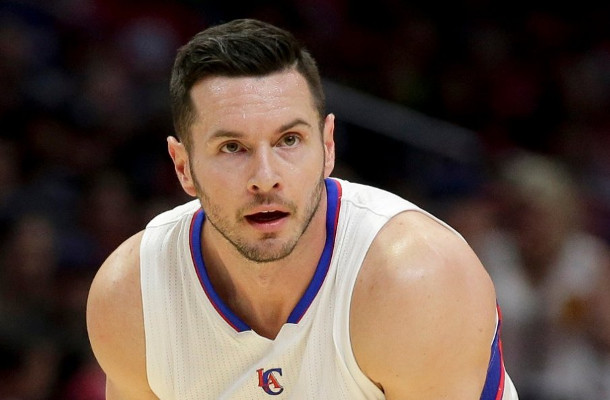
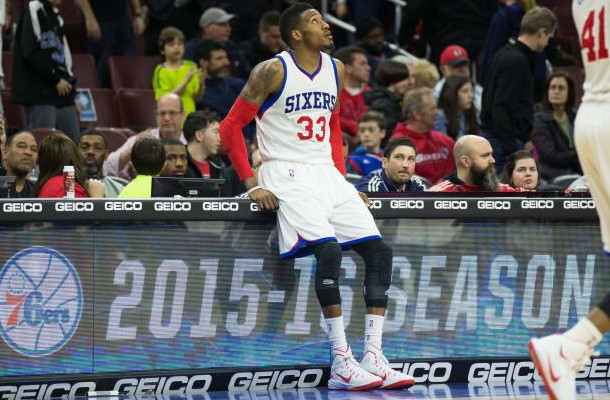
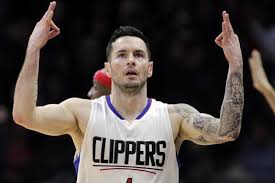
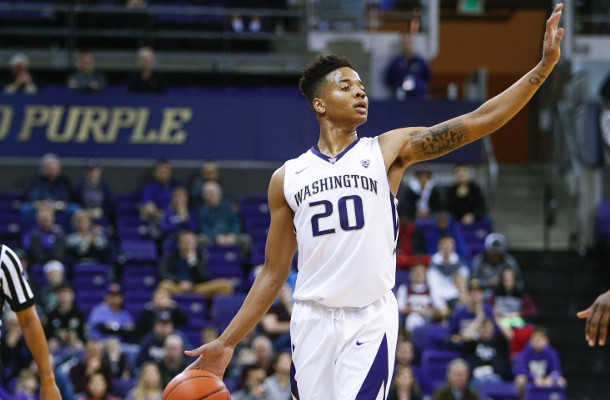
Pingback: online pharmacies canada()
Pingback: Viagra for daily use()
Pingback: Viagra lowest price()
Pingback: Cialis prices()
Pingback: Viagra viagra levitra()
Pingback: vardenafil hydrochloride()
Pingback: buy generic viagra online()
Pingback: generic levitra()
Pingback: viagra pills()
Pingback: viagra without doctor prescription()
Pingback: online viagra()
Pingback: viagra 100mg()
Pingback: canadian pharmacies online()
Pingback: international pharmacy()
Pingback: canadian pharmacies online()
Pingback: drugstore online()
Pingback: canada pharmacy()
Pingback: cialis generic()
Pingback: tadalafil()
Pingback: pharmacies()
Pingback: online viagra()
Pingback: amoxicillin()
Pingback: купить виагру ли()
Pingback: гдз 6 класс виленкин()
Pingback: canadianpharmacystorm.com()
Pingback: гдз баранов()
Pingback: genericvgrmax.com()
Pingback: гдз по русскому ладыженская()
Pingback: гдз по английскому 10 класс()
Pingback: гдз 3 класс()
Pingback: viagrawithoutdoctorspres.com()
Pingback: гдз 6 класс математика виленкин()
Pingback: гдз 4()
Pingback: гдз по химии габриелян()
Pingback: canpharmb3.com()
Pingback: гдз по русскому ладыженская()
Pingback: гдз скачать()
Pingback: ciapwronline.com()
Pingback: levitra online()
Pingback: viagra for sale()
Pingback: pain meds without written prescription()
Pingback: albuterol inhaler()
Pingback: viagra on line no prec()